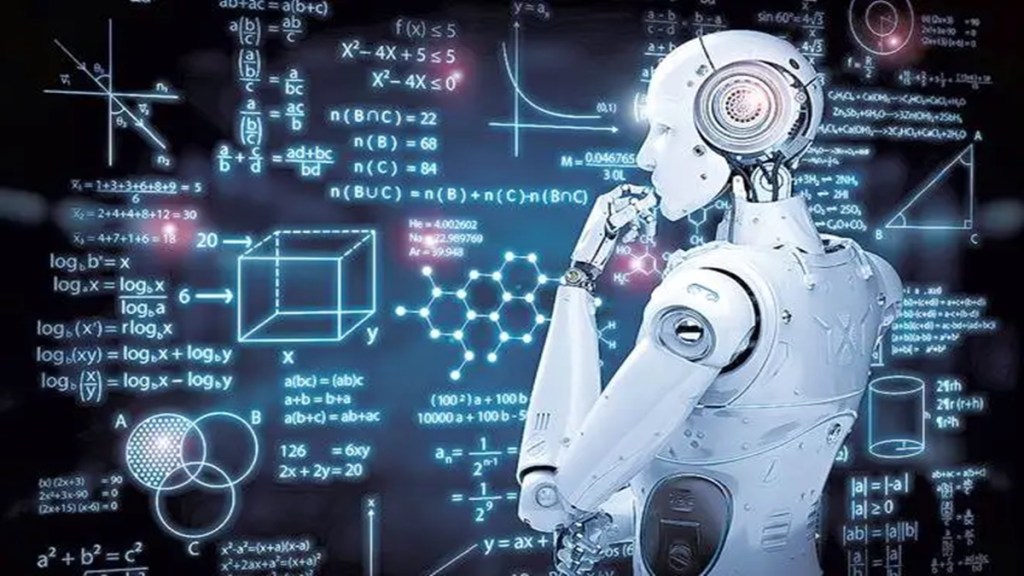By Yeshasvini Ramaswamy
The fear of job displacement and automation has raised concerns among workers in various industries. However, upon closer examination, it becomes evident that AI has the potential to create new job opportunities and stimulate economic growth. The fear of machines permanently replacing humans has persisted for centuries, yet evidence suggests that more jobs with improved wages have emerged over time, contradicting these concerns.
In April 2023, the World Economic Forum (WEF) released a study predicting the creation of 69 million new jobs with the advent of AI. The report also projected a 22% growth in the Indian job market alone. Allowing AI to advance and integrate into the economy could lead to an unprecedented and sustained economic upswing, accompanied by increased employment and wages. This optimistic outlook contrasts starkly with prevailing apprehensions, and we will explore the reasons behind this transformative outcome.
Critics often overlook the lump of labor fallacy, an economic concept stating that there is a finite amount of labor in an economy at any given time, which can be performed by either machines or humans. The misconception arises from the belief that if machines take over tasks, there will be no work left for humans.
When technology is applied to production, productivity growth occurs, resulting in increased output with reduced inputs. This leads to lower prices for goods and services, generating cost savings for consumers. With this extra disposable income, individuals can allocate their resources toward purchasing other goods and services. The resulting surge in demand stimulates the emergence of innovative products and industries, leading to the creation of new employment opportunities. Consequently, a larger economy with greater material prosperity, more industries, products, and jobs is established.
Furthermore, this trend contributes to higher wages. In the labor market, compensation is determined by the worker’s marginal productivity. Employees in technology-driven businesses often exhibit higher productivity levels compared to their counterparts in traditional sectors. As a result, employers recognize the enhanced value these skilled workers bring and offer higher wages accordingly. Alternatively, competing employers may also increase wages to attract and retain talented individuals. Therefore, the integration of technology not only expands job opportunities within an industry but also elevates wages.
Moreover, AI can play a crucial role in fostering an intergenerational workforce. With its ability to automate repetitive tasks, AI frees up time for employees to focus on complex problem-solving, creativity, and critical thinking—skills that are often honed with experience and maturity. This dynamic enables a collaborative environment where younger employees can learn from the wisdom of their more seasoned counterparts, while the fresh perspectives of the younger generation invigorate innovation and drive progress.
By harnessing AI’s capabilities, organisations can create a harmonious blend of skills and knowledge, cultivating a workplace that values the contributions of all generations and thrives in the face of evolving technological landscapes. Let us seize this opportunity to foster inclusivity, bridge generational gaps, and unlock the full potential of an intergenerational workforce empowered by AI.
Recommendations for advancing with AI
To advance with AI, it is essential to address unconscious biases and ethical considerations. Firstly, it is important to allow big AI companies to develop AI rapidly and aggressively. However, safeguards must be in place to prevent them from attaining regulatory capture or establishing a government-protected cartel that hampers market competition through misleading claims about AI risks. Similarly, start-up AI companies should be granted the freedom to build AI swiftly and aggressively, fostering an environment that promotes excellence through healthy competition while ensuring adherence to ethical guidelines.
To mitigate the potential risks associated with unconscious biases in AI and the malicious use of technology, governments should collaborate with the private sector to actively address these concerns. This collaboration should go beyond addressing AI-related risks and extend to broader societal issues, such as addressing unconscious biases in AI systems, mitigating the impact of AI on vulnerable populations, and addressing biases in data collection and usage. Additionally, this partnership should encompass addressing challenges related to malnutrition, disease, and climate change, recognizing that AI has the potential to contribute significantly as a problem-solving tool. Therefore, we must embrace and leverage AI’s capabilities while ensuring it is used ethically and responsibly.
The impact of AI on the job market cannot be solely viewed through the lens of automation and displacement. It presents a diverse landscape of new opportunities and career paths. However, it is crucial to be mindful of unconscious biases that may be embedded in AI systems, both in hiring practices and in the allocation of resources. To ensure a fair and inclusive job market, it is essential to upskill and reskill the existing workforce, enabling individuals to adapt to the evolving job market and effectively harness the potential of AI technologies. By addressing unconscious biases and promoting ethical practices, we can navigate the future with AI and empower workforces to thrive in a rapidly changing world.
(The author is a serial entrepreneur & CEO, Great Place To Work India. Views expressed are personal.)


